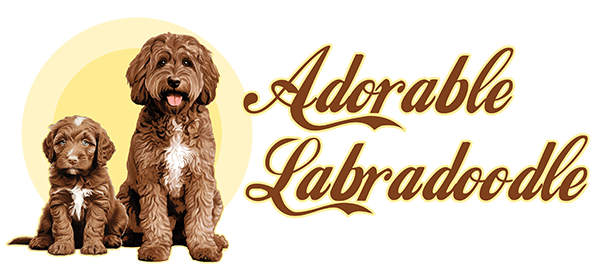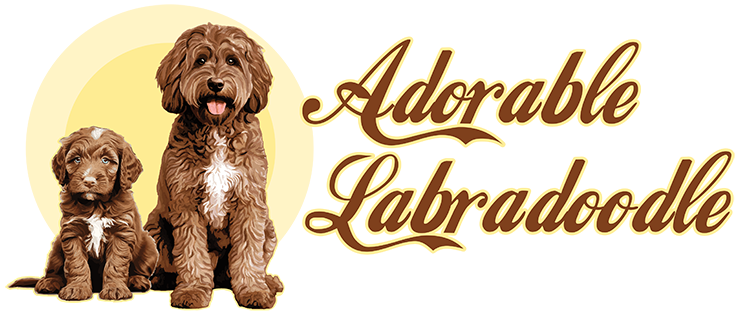Choosing the right stud for your Labradoodle is a crucial decision that significantly impacts the health, temperament, and physical traits of the puppies. As a responsible breeder, it’s essential to consider various factors that ensure a strong genetic match. This article explores how to choose the right stud for your Labradoodle and what to keep in mind during the selection process.
Why Choosing the Right Stud Matters
Selecting the right stud is crucial to maintaining the Labradoodle’s desirable traits, such as intelligence, friendliness, and hypoallergenic coat qualities. Labradoodles, a mix of Labrador Retriever and Poodle, are known for their playful nature and hypoallergenic coats. By choosing a stud with a good genetic background, you increase the chances of producing puppies that meet these expectations. Additionally, health and temperament are key factors that will shape the future of the litter.
Factors to Consider When Choosing a Stud for Your Labradoodle
1. Health and Genetic Testing
The health of the stud is the most important factor to consider. Before choosing a stud for your Labradoodle, ensure that he has passed comprehensive health screenings, including tests for common breed-specific health issues like hip dysplasia, elbow dysplasia, eye diseases, and epilepsy. Many responsible breeders also provide genetic testing results, confirming that the stud is free of hereditary conditions that could be passed on to the puppies.
Moreover, it’s important to ensure genetic compatibility between your female Labradoodle and the stud. If your dog has any specific health concerns, selecting a stud with clear health results for those conditions is crucial in reducing the risk of passing them to the offspring. It’s recommended to work with a veterinarian to evaluate potential genetic risks and confirm compatibility.
2. Temperament and Personality
A stud’s temperament is equally as important as his physical traits. Labradoodles are known for their friendly, intelligent, and social nature. When choosing a stud, aim to find one whose temperament complements your female Labradoodle’s behavior. If your female is calm and easygoing, it may be beneficial to select a stud with similar traits to ensure that the puppies inherit these wonderful qualities.
It’s important to remember that temperament can be influenced by both genetics and environment. Therefore, a stud that has been well socialized and exposed to various situations will more likely pass down stable temperament traits to the puppies.
3. Size and Physical Characteristics
Labradoodles vary in size, from standard to miniature, and selecting a stud that aligns with your female’s size is crucial for the puppies’ health. If your female is on the smaller side, consider a stud that is similarly sized to avoid complications during delivery. Having a balanced size between both parents will also help ensure the puppies’ proper growth and health.
In addition to size, physical traits such as coat type, color, and structure are important factors to consider. Labradoodles are known for their hypoallergenic coats, but the coat type can vary. If you are aiming for puppies with non-shedding, curly coats, select a stud with similar coat genetics to ensure consistency in the litter’s coat texture.
4. Reputation and Experience of the Stud Owner
A reputable stud owner with experience in breeding is essential for ensuring the health and quality of your Labradoodle’s litter. Look for a stud owner who has a good track record of breeding healthy, well-adjusted puppies. Ask for references or testimonials from previous breeding clients to learn about the stud’s history, health records, and the puppies he has produced.
Experienced breeders understand the genetics of their dogs and can offer valuable advice regarding the stud’s traits, health, and temperament. They are also more likely to maintain high standards of care and ensure that both the stud and the female are well cared for during the breeding process.
5. Lineage and Pedigree
Reviewing the stud’s pedigree is another crucial step in selecting the right match for your Labradoodle. A solid pedigree will provide insight into the stud’s genetic background, potential health issues, and inherited traits. Additionally, check if the stud has a history of producing puppies that meet your expectations, whether it’s physical traits, temperament, or health.
Ensure that the stud’s lineage does not overlap too much with your female Labradoodle’s ancestry to avoid inbreeding, which can lead to genetic issues in the offspring. A diversified gene pool will help produce healthier, more genetically sound puppies.
How to Increase the Chances of Successful Breeding
Once you have selected the right stud for your Labradoodle, several steps can help increase the chances of a successful breeding process:
- Timing is Critical: Proper timing during the female’s heat cycle is crucial for successful mating. Track her cycle and work with your veterinarian to determine the best time for mating.
- Consult a Veterinarian: If you are uncertain about the breeding process or need assistance with artificial insemination, a veterinarian can help guide you through the procedure. They can also perform health checks and ensure that both the stud and the female are in optimal condition.
- Plan for the Puppies’ Future: Responsible breeders always think about the puppies’ future. Before mating, make sure you have plans for rehoming the puppies or have potential families lined up who will provide loving homes. Ensure you have the resources and knowledge to care for the puppies throughout their early lives.
Conclusion: Making the Right Choice
Choosing the right stud for your Labradoodle is a critical part of the breeding process. By considering factors such as health, temperament, size, pedigree, and the stud owner’s reputation, you ensure that the litter has the best chance of being healthy and well-adjusted.
The right stud will help produce puppies with the traits you desire, whether it’s a loving, social temperament or hypoallergenic coats. With thoughtful planning and research, you can be confident that your Labradoodle’s litter will inherit the best qualities of both parents. Remember, breeding is not just about producing puppies—it’s about doing so responsibly and with the future health and happiness of the dogs in mind.



